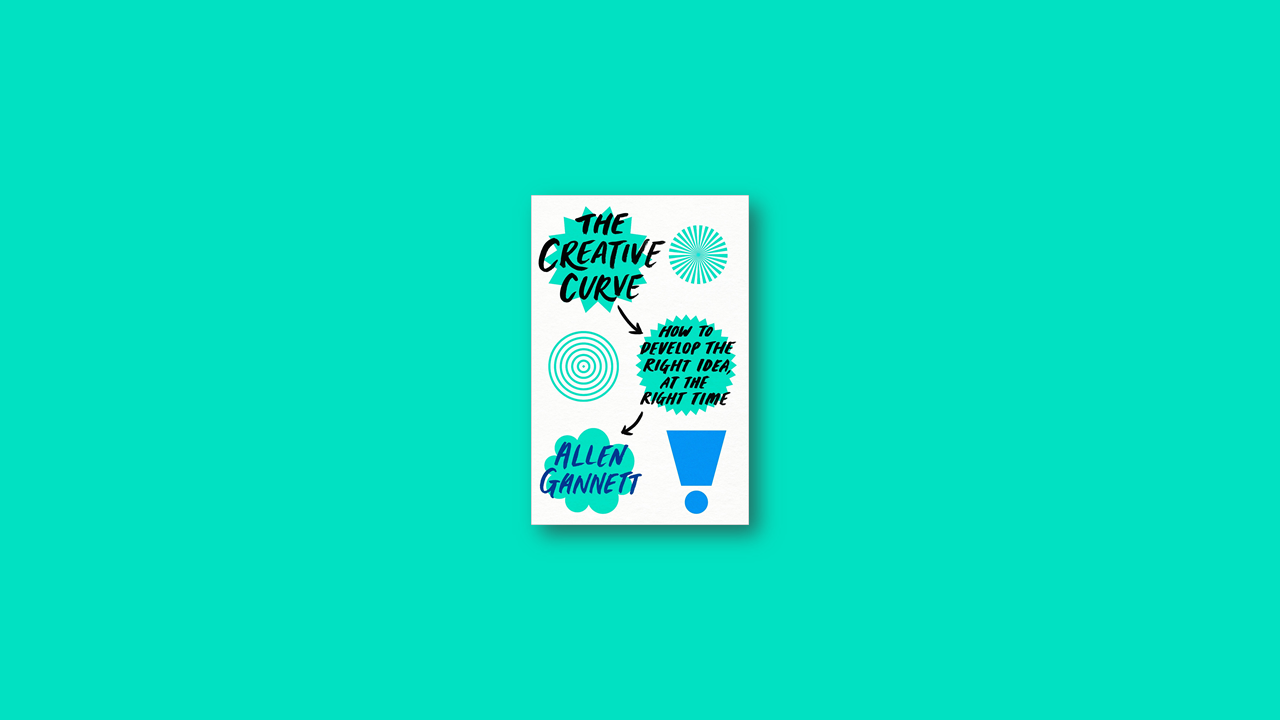The Creative Curve
Human pursuit of both familiarity and novelty results in a bell-shaped curve relationship between preference and familiarity. Take for example, we like songs more and more with each additional exposure until they reach a peak, at which point they become overexposed. From that point on, each additional listen makes us like them less and less. I call this bell-shaped curve the creative curve.
 The creative curve describes a personal phenomenon, tied to one person’s familiarity, so what happens when an entire population of people is exposed to a particular song, movie, or product. Understanding both the creative curve and the point of cliché is critical to knowing how to achieve mainstream success. You want ideas that are familiar enough to increase the chances of widespread adoption, and that at the same time create enough of a “novelty bonus” to drive interest.
The creative curve describes a personal phenomenon, tied to one person’s familiarity, so what happens when an entire population of people is exposed to a particular song, movie, or product. Understanding both the creative curve and the point of cliché is critical to knowing how to achieve mainstream success. You want ideas that are familiar enough to increase the chances of widespread adoption, and that at the same time create enough of a “novelty bonus” to drive interest.
Law #1 Consumption
If your goal is to achieve mainstream success, your first step should be to immerse yourself in the field you’re interested in, exposing yourself to and consuming as much as possible. This will allow you to identify ideas that are familiar to previous successes.
But wait one second. Before you start consuming books, CDs, movies, or television shows, you need to remember one possible conundrum. The fact is, many of us are already consuming massive amounts of material. According to the U.S. Department of Labor, the average American watches three hours of television every day, which comes to roughly 20 percent of their waking hours.
If we’re all consuming huge amounts of television, why aren’t more of us creating hit shows?
Consumption’s primary role is to help you identify something’s level of familiarity. But the creative curve also demands that you create the right amount of novelty. It’s not enough to simply identify novelty; you have to add just the right amount. To do this, creatives consistently engage in something that may seem surprising: imitation.
Law #2 Imitation
Benjamin Franklin method involves the careful observation and re-creation of the structures underlying successful creative work. Creators use the Franklin method to understand the formulas or patterns that have proven to be historically successful.
Along the way they’re exposed to a baseline of familiarity that their audience would know. Then, on top of that structure, they can add novelty while maintaining the necessary familiarity. The Franklin method isn’t just a historic occurrence, or artifact. It’s still a critical part of understanding and mastering the creative process in a digital world.
Law III: Creative Communities
When we glimpse a famous entrepreneur, actor, musician, or poet on the cover of a magazine, it can be easy to subscribe once again to the lone genius theory of creativity. Yet pretty much all the high-achieving creatives had built a creative community made up of a group of people who continue to help them on their journey toward creating hits.
These creative communities feature four types of individuals:
- A Master Teacher—This is the person who teaches you the patterns and formulas of your craft or industry, to ensure that you create things with the right level of familiarity, while also giving you the feedback you need to hone your craft through deliberate practice.
- A Conflicting Collaborator—Everyone has flaws. In order to make them nonfatal, you need to find a person or a group of individuals whose traits compensate for your flaws.
- A Modern Muse—A life of creativity often involves getting your soul slapped around. You need to surround yourself with people who will motivate and inspire you to persevere, who can be a source of fresh ideas and even friendly competition to push you toward achieving your very best work.
- A Prominent Promoter—To be a creative success, you need to be recognized as one. A prominent promoter already has credibility and is willing to share it with you. Not only does this benefit you, it also benefits the prominent promoter, who now has access to fresh ideas that help keep them at the right point on the creative curve.
The best innovators know that creative success isn’t a solo adventure, and also know that a single key partner is insufficient. We all need in our orbits a community of people who will fill a variety of roles.
Law #4 Iterations
Because of the way that consumers change their preferences, ideas that worked once can lose their specialness. This is why creators need to measure and assess their ideas constantly.

The iteration process allows anyone to refine their work to find the ideal spot on the creative curve. In the end, all commercial creativity is about the same thing: creating products that will match—and intersect with—an audience’s taste at a particular point in time.

